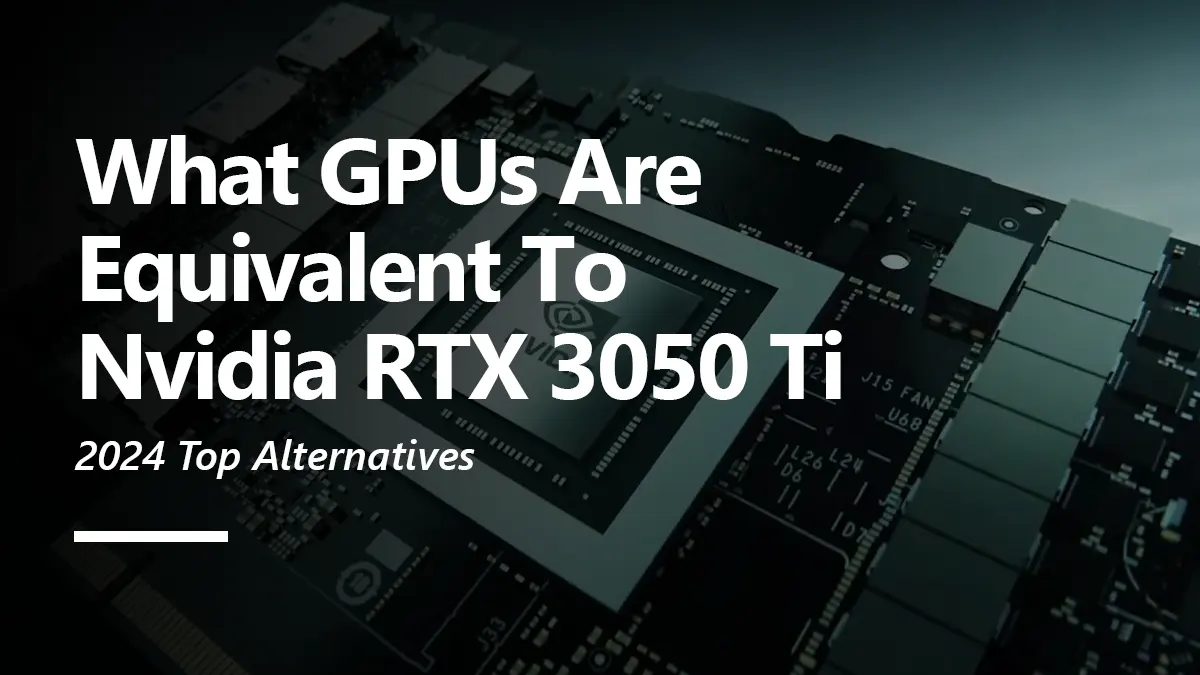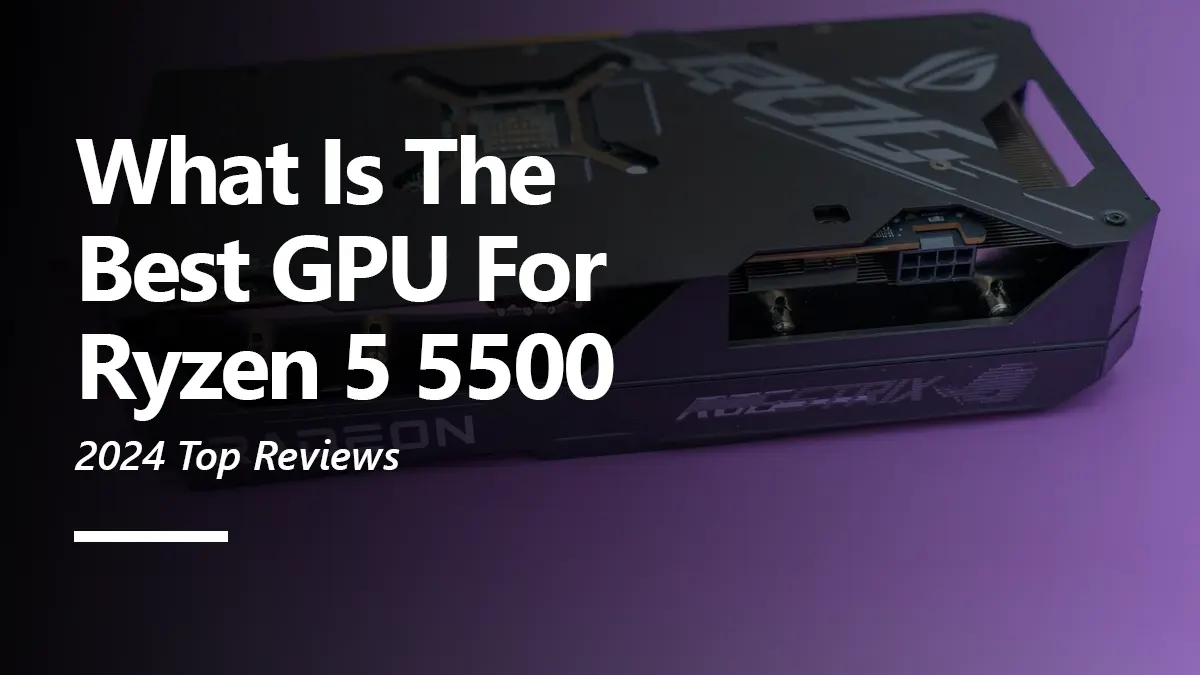The RTX series engrossed many of Nvidia’s outstanding graphics cards. Under this title, Nvidia has delivered many excellent GPUs ranging from entry-level to professional-level high-end targeted at each consumer demographic. Among the RTX GPUs is the RTX 3050, which is made for an authentic 1080p gaming experience.
Even though the 3050 is considered an entry-level graphics card, it encompasses all of the features that the RTX 30 series is known for and reaps the benefits of having 20 second-gen RT cores, 80 Tensor, and 2560 CUDA engines. With an 8 GB VRAM, the RTX 3050 boasts a significant 1080 performance at a very admirable power consumption, only consuming around 130 Watts at most.
Additionally, it operates at a decorous 1550 – 1777 MHz speed, which bodes well for its Full HD-focused performance. Since RTX 3050 isn’t the only card of this stature and might not be available to you firsthand, we will review the best alternatives capable of similar performance falling in the same qualitative category.
GPU equivalent to the RTX 3050
The direct equivalent of the RTX 3050 is the RX 6600 and 1660ti with a surprisingly similar performance. The 3050 is designed for entry-level gaming at 1080p resolution. So, finding an equivalent GPU isn’t hard because many aged or modern GPUs also deliver an identical performance. Lets discuss the details on the alternatives next in their separate pieces.
XFX Speedster Radeon RX 6600
Coming from Team Red, RX 6600 is an astounding 1080p gaming graphics card that shows what AMD has been cooking in their GPU manufacturing division in recent years. It uses a TSMC-designed 7nm processor chip and the RDNA 2 microarchitecture.
The 6600 features factual 1080p-capable GPU specifications, evident in its exemplary 1600 – 2400 MHz frequency, eight Gigabytes of VRAM, over 1700 stream units, and 28 ray accelerating units. The raytracing lacks proper utilization and isn’t as fleshed out as comparable RTX GPUs.
Using the Radeon software features, this card can be pushed to its absolutes, and a generous margin over the RTX 3050 exquisitely improves the outcome. It is around 30% faster performing the same tasks as the RTX 3050.
| Feature | XFX Speedster Radeon RX 6600 | NVIDIA GeForce RTX 3050 |
|---|---|---|
| Architecture | RDNA 2.0 | Ampere |
| Core Clock (MHz) | 1968 MHz | 1552 MHz |
| Boost Clock (MHz) | 2589 MHz | 1777 MHz |
| CUDA Cores | 2560 | 2560 |
| Memory Type | GDDR6 | GDDR6 |
| Memory Size (GB) | 8 GB | 8 GB |
| Memory Bus Width (bits) | 128 bit | 128 bit |
| Memory Speed (Gbps) | 1750 MHz 14 Gbps effective | 1750 MHz 14 Gbps effective |
| TDP (Watts) | 130 W | 130 W |
| DirectX Version | 12 Ultimate (12_2) | 12 Ultimate (12_2) |
| OpenGL Version | 4.6 | 4.6 |
| VR Ready | - | - |
| Ray Tracing Cores | 20 | 20 |
| Ports | 1x HDMI 2.1 3x DisplayPort 1.4a | 1x HDMI 2.1 3x DisplayPort 4.1a |
| Price | $400.21 | $290.85 |
Zotac Gaming GeForce GTX 1660 Ti
The GTX 1660ti is a relic of the recent past that still sees plenty of use to this day. Using the forgotten Turing architecture and substantially larger 12nm chip, the 1660ti still surpasses expectations with its exemplary 1080p performance in numerous modern games.
It has 6GB of video memory and runs at a frequency between 1500 – 1770 MHz. The 192-bit bus on the 1660ti also allows for better bandwidths than the 3050’s 128-bit wide bus. It has no raytracing or tensor cores because they weren’t introduced back then. However, it does have 1536 CUDA cores and 24 Streaming Multiprocessors.
Despite having older tech and board design, the 1660ti still barely beats the 3050 in gaming performance at 1080p resolution and stands as a more valued choice. But it wouldn’t be able to perform in scenarios involving Tensor or RT cores, like the DLSS upscaling feature.
| Feature | Zotac Gaming GeForce GTX 1660Ti | NVIDIA GeForce RTX 3050 |
|---|---|---|
| Architecture | Turing | Ampere |
| Core Clock (MHz) | 1500 MHz | 1552 MHz |
| Boost Clock (MHz) | 1770 MHz | 1777 MHz |
| CUDA Cores | 1536 | 2560 |
| Memory Type | GDDR6 | GDDR6 |
| Memory Size (GB) | 6 GB | 8 GB |
| Memory Bus Width (bits) | 192 bit | 128 bit |
| Memory Speed (Gbps) | 1500 MHz 12 Gbps effective | 1750 MHz 14 Gbps effective |
| TDP (Watts) | 120 W | 130 W |
| DirectX Version | 12 (12_1) | 12 Ultimate (12_2) |
| OpenGL Version | 4.6 | 4.6 |
| VR Ready | - | - |
| Ray Tracing Cores | 96 | 20 |
| Ports | 1x DVI 1x HDMI 2.0 1x DisplayPort 1.4a | 1x HDMI 2.1 3x DisplayPort 4.1a |
| Price | $171.82 | $290.85 |
Final Words
The RTX 3050 homogenizes the best of both worlds. It employs contemporary features such as DLSS 2, raytracing, future-proofing, and fast memory with a reasonably satisfactory cost. Moreover, it also has creative workload handling capability with good gaming performance.
But if you consider all the options, the RX 6600 is better due to its superior performance and faster speeds. Additionally, the GTX 1660ti is surprisingly efficient even after all this time, considering you only want a graphics card for gaming.
The RX 6600 provides a better price-to-performance ratio, and the GTX 1660ti is overall more efficient with lower power consumption and higher performance margin. Also, the value of the GTX 1660ti exceeds the 3050 because you can get a used one for almost half the price.




